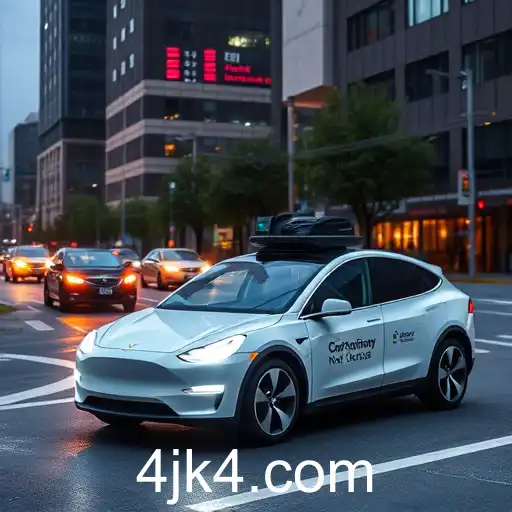
Exploring the latest advancements and ongoing challenges in the field of autonomous vehicle technology as it gains momentum worldwide.
As the world steers towards a more technologically integrated future, the advancement of autonomous vehicle technology has emerged as a pivotal force transforming the landscape of transportation in 2025. With companies and governments investing heavily in research and development, the momentum behind self-driving cars is undeniable, aiming to redefine mobility by enhancing efficiency, reducing emissions, and increasing accessibility.
Companies like Tesla, Waymo, and newer entrants like Cruise are pushing the envelope by refining AI algorithms that power these vehicles. They are designing systems capable of navigating complex urban environments autonomously. The integration of LiDAR, computer vision, and machine learning enables these cars to interpret real-world scenarios instantly, identifying obstacles, pedestrians, and other vehicles with astounding precision. However, the journey to full autonomy is fraught with challenges that span technological, ethical, and regulatory dimensions.
One significant challenge is ensuring the safety and reliability of autonomous vehicles. A key concern is how these cars perform in unexpected situations, like adverse weather or unpredictable pedestrian behavior. Moreover, issues of cybersecurity loom large, as the data-rich platforms powering these vehicles could become targets for malicious attacks. The industry faces the substantial task of implementing robust security measures that protect users' data and ensure safety.
On the regulatory front, developing a standardized framework for the operation and testing of autonomous vehicles remains complex. Countries must navigate a labyrinth of regulatory approaches, balancing the need for innovation with public safety. Policymakers are tasked with drafting legislation that fosters innovation while setting clear safety standards.
Despite these challenges, the potential benefits of autonomous vehicles cannot be overstated. With the promise of reduced traffic congestion, lower emissions, and improved accessibility for those unable to drive, the technology is poised to revolutionize urban planning and transport logistics. As the industry progresses, a collaborative effort by technologists, ethicists, and lawmakers is paramount to ensure the technology aligns with societal needs and values.
In conclusion, while the road to deploying fully autonomous vehicles is still under construction, the strides made so far underscore a transformative shift in how transportation could be envisaged in the near future. Continued advancements and pragmatic approaches to tackling existing challenges will be crucial in ensuring that autonomous vehicles integrate seamlessly into everyday life, heralding a new era in personal and public transportation.




